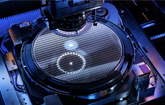HAMPTON, Va., May 1, 2012 /PRNewswire-USNewswire/ -- A technique for synthesizing a high-tech material technology, jointly developed by NASA Langley Research Center, the U.S. Department of Energy's Jefferson Lab, and the National Institute of Aerospace (NIA), was recently licensed by BNNT LLC of Newport News, Va.
(Logo: http://photos.prnewswire.com/prnh/20081007/38461LOGO)
In a signing ceremony on March 22 at the NIA, BNNT LLC acquired the intellectual property rights for making the material called fibril boron nitride nanotubes (BNNTs) available for scientific and commercial research, development and products.
Only small quantities of the material have been available outside of research labs since it was first produced in 1995. With advanced techniques, BNNT LLC hopes to improve current production rates by a factor of 100.
Structurally similar to carbon nanotubes, the strong and versatile microscopic tubes whose diameter is measured in nanometers (a nanometer is one billionth of a meter/39 inches), Fibril BNNT has a variety of properties attractive to the research and commercial industry.
Potential applications include:
- Polymer and ceramic composites to create new types of armor, thin coatings, batteries, aerospace components, and applications in dentistry.
- Biomedical uses include material to help with nerve and bone tissue regeneration, and cancer treatments.
- Electrical insulation, radiation shielding, fire retardant cabling, and other materials for sensors and robotics including applications in unmanned aerial vehicles, harvesting energy and satellites.
"It doesn't stop with BNNT. There are other nano-materials that will come out of this same technology that are very significant to mission applications," said Catharine Fay, NASA Langley's BNNT program manager and a senior materials engineer. "BNNT happened because a whole bunch of folks worked on the science and inventions, licensing, tech transfer; it was a team effort."
The BNNT materials have a piezoelectric function – meaning it creates electricity resulting from pressure – and can be used in extreme temperature environments (up to 800 C or 1472 F) and shields against neutron and ultraviolet radiation.
NASA hopes that the energy-harvesting aspect of BNNT-based materials will make aerospace missions safer and longer by providing auxiliary power for electronic devices and health monitoring systems.
NASA Langley press releases are available automatically by sending an e-mail message to [email protected] with the word Subscribe in the subject line. You will receive an e-mail asking you to visit a link to confirm the action. To unsubscribe, send an e-mail message to [email protected] with the word "Unsubscribe" in the subject line.
SOURCE NASA
WANT YOUR COMPANY'S NEWS FEATURED ON PRNEWSWIRE.COM?
Newsrooms &
Influencers
Digital Media
Outlets
Journalists
Opted In






Share this article